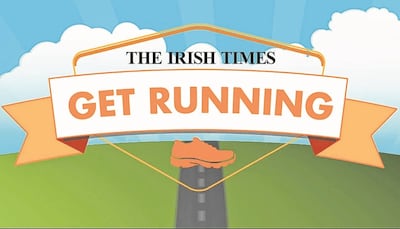You don’t have to look very far out your window to see there are more people out running than ever before. It all starts with participation, and there are always fresh motivations out there, particularly early in the new year.

There is Couch to 5K, Operation Transformation, the Daily Mile, new park-run events and new park-run runners almost every week.
To see this growth and expansion, with people running in every town and village, whatever the weather, is certainly uplifting, and encouraging for the health of the nation as a whole. It also throws up some concern when so much of priority appears to be focussed on quantity over quality.
There also needs to be a way of fishing out potential athletes and directing them on a fruitful path. An overlap is needed. To me there is still some obvious middle ground missing between elite athletes training for the Olympics and those running to keep fit.
There are many ways of achieving success in any sport, and many are more calculated and measured than others
When you look around, with so many taking up running there must be some talent out there if pointed in the right direction. They may find out more about themselves than they ever dreamed possible, and realise their true potential as an athlete.
I think many women in particular get sidelined as teenagers, and then rarely make it back to see what might have been.
Many, of course, are happy on the path they take, but you have to think when you look at the athletic history of our country that somehow we’ve lost much of the depth and competition to push each other to the highest level.
Raising the bar
There are plenty of reminders of that in Winning for Ireland by Peter Byrne, a history of Irish athletics recently published. It tells the story of Irish athletes from the very beginning, the first recorded athletics meeting held in Dublin in 1857.
There has been a steady stream of Irish athletes ever since, continually raising the bar each year, always one or two standing out to maintain a winning status.
Still, there could be so much more when you reflect on the history and achievements of ordinary people who turned out to be extraordinary athletes even when there was so much less information available, so few resources to utilise.
The book is much more than a history book of athletes, competitions and results: it also tells the story of people that aspired to reach the highest level and win for Ireland, where they came from, how they made it.
And also the legacy they left behind – so much untapped knowledge and first-hand competitive experience.
These days it's not so easy to run so fast or so far and get the required absolution. Instead I often find myself buried in a book that takes me away to another place
For many years athletes have made a bold statement when they rise up and qualify for an Irish team. Then the expectation is there sometimes for too long, and the moment of opportunity expires.
There are many ways of achieving success in any sport, and many are more calculated and measured than others. Part of it is the unpredictability and the ability to rise above what you know is possible that generates the most intriguing of stories.
It’s often difficult to explain and increases the interest and intrigue around an athlete when they simply throw caution to the wind and see what’s possible.
Tweaked
A plan is great, but that’s all it should be: a plan should also be changed and tweaked, and even ripped up if it’s not quite giving the freedom to dig deep and uncover the seemingly impossible.
I can recall many times throughout my career when based in London, it could be pre-season, mid-season or in the depths of winter, and things just weren’t going quite right.
There would be something annoying or bothering me, not always to do with training or racing, just something niggling at me that could easily stop you in your tracks. It could be a simple disagreement that could just eat away and wear you down.
The simplest solution was to head to Bushy Park and bang out a lap as fast as I could. It was just under seven miles around, so there was a good 40 minutes to get myself back on an even keel.
It didn’t matter if I had a hard track session the day before, or the day after, or even earlier in the day; there was only one solution to get back on track, and that was a fast lap of the park. In ways it seems almost senseless, but when there is a tension growing inside it needs to be banished quickly.
These days it’s not so easy to run so fast or so far and get the required absolution. Instead I often find myself buried in a book that takes me away to another place. It’s a slow-burning effect but still works when you’re lost in a story and life continues on around you until you reach the end and inevitably look around and see things differently.
Olympic gold
Another book that's been giving me a reminder of all that is The Boys in the Boat, by Daniel James Brown, one of the best books I've read in a long time.
It is so much more than the story of nine American men in a boat and their quest for Olympic gold. It also takes you back to a simpler time, of training, resting, working, eating and competing.
The backdrop to the story is the build-up to the 1936 Berlin Olympics. One year out, 1935, was a crucial year to decide who would be selected in the number one boat at the University of Washington to go forward to the US Olympic trials.
It was rarely smooth rowing on Lake Washington, but it didn’t seem to matter when there was a sense of serenity and calm in the boat.
There was always work to do, and often in training things looked awry, the waters rough, but when it counted the number one boat found the harmony that allowed each member of the boat to pull together and work beyond pain and exhaustion beyond the unknown.
With just over one year out from the Tokyo Olympics it’s time for more Irish athletes to test those rough waters, to try different ways to achieve success, to train hard, relax and race easy. There is only so much training you can do.
Fears and worries
In order to shake things up athletes need to practise racing, become harmonised on the racing track and in their lives, and leave behind their fears and worries so they can taste success and make it the norm beyond the fear of expectation.
It's been done before. Open any page of Winning for Ireland and you'll find an inspiring story.
Some you will be more familiar with than others, but each athlete has a story to tell, and a determination to succeed.
It’s time to write a few more of them.

Sign up for one of The Irish Times' Get Running programmes (it is free!).
First, pick the eight-week programme that suits you.
- Beginner Course: A course to take you from inactivity to running for 30 minutes.
- Stay On Track: For those who can squeeze in a run a few times a week.
- 10km Course: Designed for those who want to move up to the 10km mark.
Best of luck!










